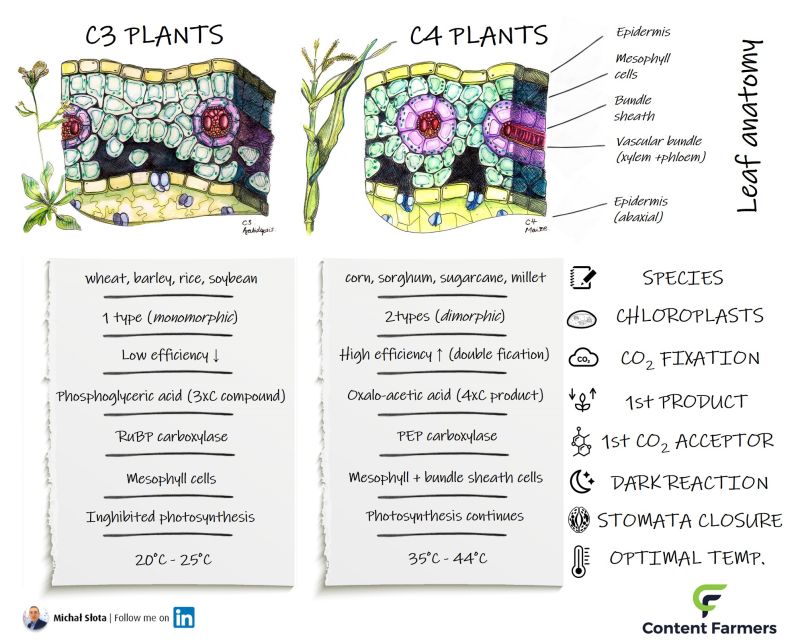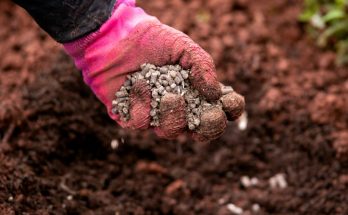
☀️ Photosynthesis is the process in which plants use to turn light, carbon dioxide, and water into sugars that fuel plant growth
🌱 🇨3️⃣ The majority of plant species undergo C3 photosynthesis, in which the first carbon compound produced contains three carbon atoms.
However, this process is hindered by the following events:
-> Rubisco enzyme aims to fix CO2, but can also fix oxygen molecules, which creates a toxic two-carbon compound in a process called photorespiration.
-> When stomata are open to let CO2 in, they are prone to water vapor loss, which is a huge disadvantage in drought and high-temperature environments.
🏜️ Some plants have evolved another form of photosynthesis to help reduce these losses in hot and dry environments.
Also read about: Cloves
🌱🇨4️⃣ In C4 photosynthesis, where a four-carbon compound is produced, unique leaf anatomy allows carbon dioxide to concentrate in ‘bundle sheath’ cells around Rubisco.
🌽 C4 plants – including maize, sugarcane, and sorghum – avoid photorespiration by using PEP enzyme during the first step of carbon fixation.
🔬 Specific anatomy of C4 plant leaves enables the delivery of CO2 straight to Rubisco, effectively removing its contact with oxygen and the need for photorespiration.
📷 Image: Comparison of C3 and C4 plants (source: K. Meacham-Hensold, University of Illinois, plant anatomy drawings by Ninghui Shi; image design by Content Farmers).
Article by : Michał Słota (Business Development 🌍| R&D 🔬| Biotechnologist 📊| Biologist 🌱| Doctor of Medical Science 🎓 | Content creator ✏️| Science communicator 🗣️)



